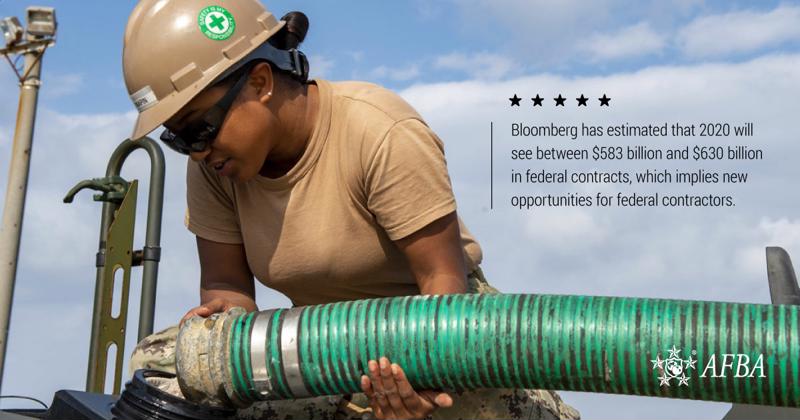Within the federal contracting landscape, the grass looks greener inside the fences this year. Here are some of the top trends and predictions that government contractors should be aware of in 2020.
The upward trend in federal contract spending continues
According to Bloomberg, federal contract spending experienced steady growth from 2014-2018.
Data from the government's Spending Explorer site confirms this trend. In FY 2017, Department of Defense (DOD) spending comprised 50.4% of all federal spending on contractual services and supplies, or $399 billion. This grew in FY 2018 to 53% ($442.2 billion) and again in FY 2019 to 55.7% ($484.5 billion).
Bloomberg has estimated that FY 2020 will see between $583 billion and $630 billion in federal contracts. This uptick implies new opportunities for federal contractors, especially those situated to serve the DOD, at the start of the new decade.

Major DOD contracts focus on enterprise-level IT solutions
Federal News Network estimates that there will be 3,000 defense contract opportunities in 2020, the largest of which relate to IT solutions:
- The DOD has already issued a request for information relating to an estimated $10 billion contract for commercial-off-the-shelf IT hardware for the U.S. Army.
- The Defense Information Systems Agency (DISA) has issued an RFP for wide area network capability, worth up to $1 billion.
Others up for recompete include:
- The Navy's $1 billion Multifunctional Information Distribution System (MIDS) Joint Tactical Radio System contract.
- DISA's Pacific $2.4 billion contract for telecommunications infrastructure transmissions.
- The Army's $500 million contract for logistics and engineering support for the information management system, Medical Communications for Combat Casualty Care (MC4).
In general, the emphasis will be on IT modernization, data analytics, cloud computing and enhanced cybersecurity. Although these massive IT contracts are likely to be awarded to enterprise-level organizations, niche providers and small businesses will have opportunities of their own.
Small business gain market share through teaming and set-asides
In 2020, contractor team arrangements (CTAs) — are expected to grow in popularity among contractors of all sizes — but particularly among small businesses. By combining resources and bidding together, they are better situated to take on significant contracts. The ongoing federal push toward securing Best-in-Class (BIC) solutions suggests a teaming uptick this year.
As MeriTalk explains, "Teaming helps contractors gain access to work, minimize risk, increase knowledge and offer a more competitive price point. Small businesses view teaming as the most effective way to thrive in the competitive federal market. "
Smaller companies will also continue to compete for the government's small business set-aside contracts in 2020. The HUBZone program has made allocating more contract dollars to businesses operating in underutilized areas a priority, with the goal of awarding at least 3% to HUBZone-certified contractors.
Spending priorities across the rest of the decade remain uncertain
While recent years exhibited clear federal priorities — particularly the significant boost in defense spending — the November 2020 election makes it impossible to confidently predict what's ahead in the coming years. As a safeguard, federal contractors should situate themselves to win and hold onto the opportunities 2020 presents.
After all, as the Baltimore Business Journal advises, "contractors can't predict every change in the political weather, [but] they can still carry an umbrella."


